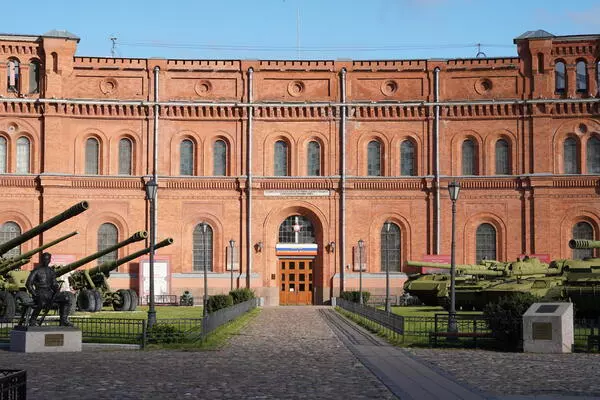On August 29, 1703, Peter the Great ordered the construction of a special Zeughaus on the territory of the Peter-and-Pavel Fortress that was to store artillery pieces of historical value. At first, the building of the Zeughaus was wooden, and later — brick. There, “In memorial for eternal glory”, outstanding domestically-made and captured guns were housed. “Memorable” and “curious” exhibits from all the Russian Empire were collected.
Initially, the collection was called the “Hall of Memorable Items of the Main Artillery Administration”, then it was renamed the Artillery Museum, and in 1903 — the Artillery Historical Museum.
During the Soviet era, the museum was expanded. In 1963, it received the collections of the Central Historical Military-Engineer Museum, and in 1965, the Museum of Signal Corps became a part of it.
Thus, the Military-Historical Museum of Artillery, Engineer and Signal Corps was formed.
Currently, it is one of the largest military history museums in the world. It contains vast collections of artillery pieces and ammunition, small arms and bladed weapons, military engineering equipment, military communication equipment, battle banners, military uniforms, battle paintings and graphic works, awards and badges. The exhibition is also replete with archival documents that reveal the history of the development of the Russian artillery and tell us about the feats of Russian warriors.
The museum’s collections of paintings, graphic and sculptural works are quite impressive. The artistic works presented in the halls reflect the heroic past of Russia. They include portraits of emperors, grand dukes, famous generals, distinguished soldiers and officers.
The halls of the museum are decorated with paintings by famous Russian battle artists B. Willewalde, N. Dmitriev- Orenburgsky, A. Charlemagne, A. Safonov, P. Kovalevsky, F. Roubaud, A. Popov, N. Samokish, M. Grekov.
Initially, the collection was called the “Hall of Memorable Items of the Main Artillery Administration”, then it was renamed the Artillery Museum, and in 1903 — the Artillery Historical Museum.
During the Soviet era, the museum was expanded. In 1963, it received the collections of the Central Historical Military-Engineer Museum, and in 1965, the Museum of Signal Corps became a part of it.
Thus, the Military-Historical Museum of Artillery, Engineer and Signal Corps was formed.
Currently, it is one of the largest military history museums in the world. It contains vast collections of artillery pieces and ammunition, small arms and bladed weapons, military engineering equipment, military communication equipment, battle banners, military uniforms, battle paintings and graphic works, awards and badges. The exhibition is also replete with archival documents that reveal the history of the development of the Russian artillery and tell us about the feats of Russian warriors.
The museum’s collections of paintings, graphic and sculptural works are quite impressive. The artistic works presented in the halls reflect the heroic past of Russia. They include portraits of emperors, grand dukes, famous generals, distinguished soldiers and officers.
The halls of the museum are decorated with paintings by famous Russian battle artists B. Willewalde, N. Dmitriev- Orenburgsky, A. Charlemagne, A. Safonov, P. Kovalevsky, F. Roubaud, A. Popov, N. Samokish, M. Grekov.



